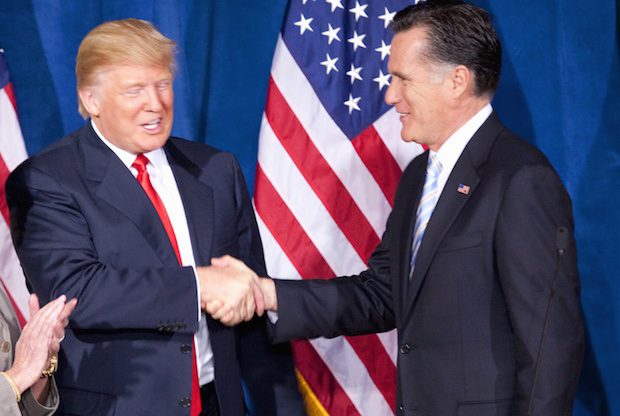Trump and Blue-State Republicans

A new Emerson poll from Massachusetts (votes March 1) shows that Trump continues to have a huge lead there:
New #Massachusetts Poll#GOP@realDonaldTrump– 50%@marcorubio– 16%@JohnKasich– 13%@tedcruz– 10%@RealBenCarson– 2%
— ECPS (@EmersonPolling) February 22, 2016
Trump’s numbers haven’t changed much since the last poll taken by the same outfit last fall. Rubio has added a few points since October, but now faces more competition from Cruz and Kasich, both of whom barely registered any support four months ago. Trump’s average support in Massachusetts is 41 to Rubio’s 17. According to Emerson, Trump and Kasich have the highest favorability ratings in Massachusetts, Rubio has middling numbers, and Cruz is unsurprisingly underwater.
The poll is valuable in a few ways. It shows that Trump can and does run very strongly in blue state primaries. (A new poll out today shows Trump with a large lead in Michigan as well.) That makes sense since the profile of blue-state Republican voters matches up fairly well with the profile of many Trump supporters in that they tend to be more moderate ideologically and less religious. It also suggests that Trump’s ceiling is not necessarily as low or hard as anti-Trump Republicans have hoped that it was. Finally, it tells us that blue-state primaries won’t be where Trump can most easily be stopped, and they’re unlikely to save the day for Rubio.
Nate Cohn explained earlier this year how Romney rode blue-state primaries to the nomination in 2012:
Mr. Romney lost all but one red-state primary held before his principal opponent dropped out of the race, yet he won the nomination by sweeping the blue states. He won 45 percent of the vote in blue-state primaries, but just 30 percent in the states that voted for him in the general election.
Trump is already occupying most of the the political space that the relative moderate front-runner normally fills. He receives support from all ideological groups in the GOP, but tends to do best with moderate and “somewhat” conservative voters. We saw that in New Hampshire, and we saw it again in South Carolina last week. That is how previous front-runners have won the nomination, and Trump is on track to do likewise.
That doesn’t leave much room for Kasich or Rubio, who do best with moderate and “somewhat” conservative voters respectively. If Rubio is an odd kind of “establishment” candidate, as Noah Millman says, that also makes him a poor fit with the blue-state Republican voters that usually make up the core of the leading “establishment” candidate’s support. Because he has a fairly conservative voting record and has mostly staked out conventional Republican positions, he has relatively little to offer moderate voters, and because he is the candidate favored by so many donors and other party elites he is also viewed with some suspicion by many conservatives.
Trump probably does have a lower ceiling of support in the most heavily Republican states than he does elsewhere, but the good news for him is that those states have earlier contests in which he will still have multiple opponents to split the anti-Trump vote. By the time most of the large blue state primaries come around in April and May, he may have fewer opponents but can expect much broader support than he did in the earlier races.
Comments